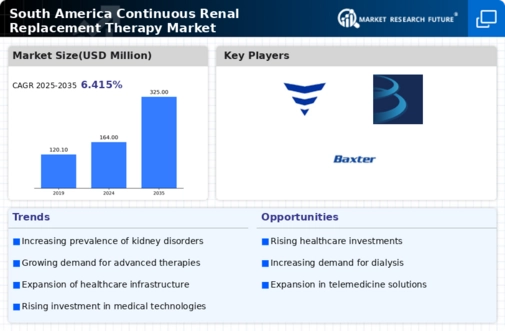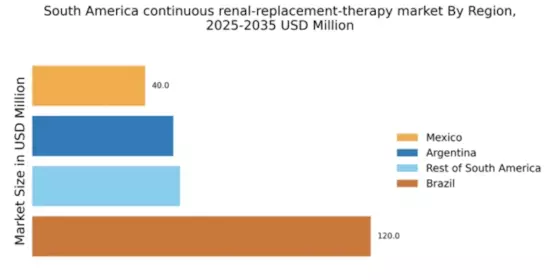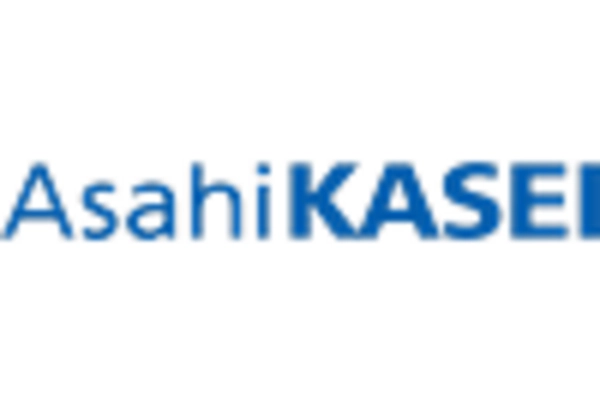Growing Aging Population
The demographic shift towards an aging population in South America is a significant driver for the continuous renal-replacement-therapy market. As individuals age, the risk of developing chronic kidney diseases increases, necessitating effective treatment options. Projections indicate that by 2030, the population aged 65 and older will account for over 15% of the total population in several South American countries. This demographic trend is likely to lead to a higher demand for renal replacement therapies, including continuous renal-replacement therapy. Healthcare providers are thus compelled to adapt their services to cater to this growing segment, which will likely stimulate growth in the continuous renal-replacement-therapy market.
Rising Healthcare Expenditure
The increase in healthcare expenditure across South America is a crucial factor driving the continuous renal-replacement-therapy market. As countries invest more in healthcare infrastructure and services, the availability of advanced treatment options, including continuous renal-replacement therapy, is expected to rise. Reports indicate that healthcare spending in the region has grown by approximately 5% annually, reflecting a commitment to improving health outcomes. This trend is likely to enhance the accessibility of renal therapies, particularly in public healthcare systems. Consequently, the continuous renal-replacement-therapy market is poised for growth as more patients gain access to necessary treatments, ultimately leading to better management of kidney diseases.
Government Initiatives and Funding
Government initiatives aimed at improving healthcare infrastructure in South America are pivotal for the continuous renal-replacement-therapy market. Increased funding for renal care programs and the establishment of specialized treatment centers are part of broader health policies. For instance, several countries in the region have allocated substantial budgets to enhance dialysis services, which directly impacts the availability of continuous renal-replacement therapy. This financial support is crucial for expanding access to treatment, particularly in underserved areas. As a result, the continuous renal-replacement-therapy market is likely to benefit from these initiatives, leading to improved patient care and increased adoption of advanced renal therapies.
Increasing Incidence of Kidney Diseases
The rising prevalence of kidney diseases in South America is a primary driver for the continuous renal-replacement-therapy market. According to health statistics, chronic kidney disease (CKD) affects approximately 13% of the adult population in the region. This alarming trend necessitates effective treatment options, including continuous renal-replacement therapy, to manage patients' conditions. As healthcare providers seek to improve patient outcomes, the demand for advanced renal therapies is expected to grow. Furthermore, the increasing burden of diabetes and hypertension, which are significant risk factors for kidney diseases, further exacerbates the situation. Consequently, the continuous renal-replacement-therapy market is likely to experience substantial growth as healthcare systems adapt to meet the needs of this growing patient population.
Technological Innovations in Renal Care
Technological advancements in renal care are significantly influencing the continuous renal-replacement-therapy market. Innovations such as portable dialysis machines and automated systems enhance the efficiency and effectiveness of treatment. In South America, the introduction of advanced monitoring systems has improved patient safety and outcomes, making continuous renal-replacement therapy more accessible. The market is projected to witness a growth rate of around 8% annually, driven by these technological improvements. Additionally, the integration of telemedicine in renal care allows for remote monitoring and management, which is particularly beneficial in rural areas where access to healthcare facilities is limited. As these technologies continue to evolve, they are expected to play a crucial role in shaping the continuous renal-replacement-therapy market.


















Leave a Comment